Photo



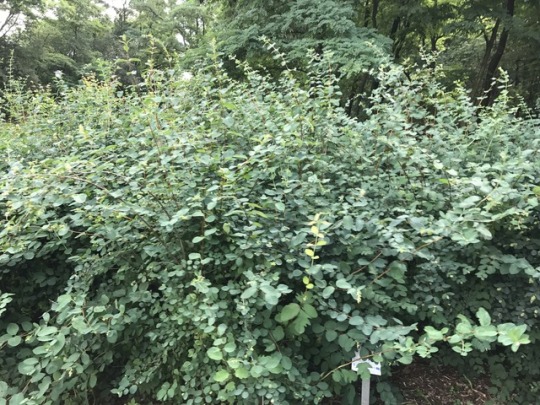
In the Silesian Botanic Garden the guide has shown us different plant species.There was one plant that amazed us with it is fruit.
Symphoricarpos albus is a species of flowering plant in the honeysuckle family known by the common name common snowberry.It is native to North America, where it occurs across much of Canada and the northern and western United States.
Symphoricarpos albus grows in shady and moist mountain and forest habitat, in woodlands and on floodplains and riverbanks. It can grow in a wide variety of habitat types. It is naturalized in parts of Britain, where it has been planted as an ornamental and a cover for game.
Symphoricarpos albus is an erect, deciduous shrub, producing a stiff, branching main stem and often several smaller shoots from a rhizome. It can spread and colonize an area to form a dense thicket. It reaches 1–2 m (3.3–6.6 ft) in maximum height. Leaves are oppositely arranged on the spreading branches. They are generally oval, differing in size and shape, and up to 5 cm (2.0 in) long, or slightly larger on the shoots. The inflorescence is a raceme of up to 16 flowers. Each flower has a small, five-toothed calyx of sepals. The bell-shaped, rounded corolla is about 0.5 cm (0.20 in) long and bright pink in color. It has pointed lobes at the mouth and the inside is filled with white hairs. The fruit is a fleshy white berry-like drupe about a centimeter wide which contains two seeds. The plant sometimes reproduces via seed but it is primarily vegetative, reproducing by sprouting from its spreading rhizome.Birds disperse the seeds after they eat the fruit.
This shrub is an important food source for a number of animals, including bighorn sheep, white-tailed deer, and grizzly bears.Livestock such as cattle and sheep readily browse it. Many birds and small mammals use it for food and cover.Pocket gophers dig burrows underneath it during the winter. The fruit and shrub itself are poisonous to humans, causing vomiting.
Native Americans used the plant as a medicine and a soap, and sometimes for food, and the wood was good for arrow shafts.In Russia, the berries are crushed in the hands and rubbed about for a soothing folk-remedy hand lotion.
This shrub is used for erosion control in riparian areas, and it is planted in ecological restoration projects on disturbed sites such as abandoned mines.Its white fruits and blue-green foliage made it popular as an ornamental plant ,planted around old houses of the 1890s through the 1920s like with the Vanhoutte Spirea or Bridalwreath. It is still sold by some large diverse conventional nurseries and native plant nurseries, and occasionally found in modern landscapes. It grows in full sun to full light shade and a well-drained soil that is slightly acid to well alkaline, pH range of about 6.0 to 8.5. it is easy to transplant with its fibrous, shallow root system. Good for USDA hardiness zones of 2 to 7.
0 notes
Video
When we were on a trip in a forest we noticed a lot of snail species.
Interesting facts about Snails
– When they feel threatened, they usually retreat into their shell to protect themsel
– Snails have no backbone.
– Some land snails feed on other terrestrial snails.”
– North America has about 500 native species of land snails.
– The snails that just hatch the egg can eat their shells and even other eggs of their brothers.
– Most snails live from 2 to 5 years, but in captivity, some have exceeded 10 or 15 years of age.
– In some places, people eat snail eggs, and call them “white caviar.”
– Usually, land snails hatch from eggs.
– The mucus of the garden snail is used to treat wrinkles, spots, and scars on the skin.
– Most snail species are hermaphrodites, so they have both male and female reproductive organs.
– The speed of snails is around 0.5-0.8 inches per second. If they moved without stopping, it would take more than a week to complete 1 kilometer.
– Snails do not change shells when they grow up.” Instead, the shell grows along with them.
– Some predators of terrestrial snails are beetles, rats, mice, turtles, salamanders and some birds.
– Land snails breathe thanks to a lung.
– The size of the shell of a snail reflects its age
Additional Snail Facts.
1. Some snails Hibernate
2. Snails can have a long life.
The life expectancy of snails depends on their habitat and the species. Some of them only live for about five years. However, others in captivity can live up to 25 years old.
3. Snail Moving.
When moving, snails leave behind a trail of mucus. This mucus acts as a lubricant to reduce friction against the surface where they pass.
4. Snail Mucus.
It is a myth that snail mucus can make humans ill. Many people worry that the snails in their garden will ruin the foods grown there and make them unfit for consumption, but that is false.
5. Snails are Hermaphrodites.
Snails have the reproductive organs of both, males and females, which categorize them as hermaphrodites. However, they usually do not create offspring on their own. They mate with another snail, and then both lay eggs.
6. Snails can see but can’t hear.
7.Snails don’t like the sunlight
8. Large family.
There are at least 200,000 species of mollusks out there including snails, although only 50,000 are classified
0 notes
Photo



Spiraea s the next plant about which we would like to tell you more. We found this plant in park and decided to write the webquest.
Spiraea is a genus of about 80 to 100 species of shrubs. They are native to the temperate Northern Hemisphere, with the greatest diversity in eastern
Spiraea plants are hardy, deciduous-leaved shrubs. The leaves are simple and usually short stalked, and are arranged in a spiralling, alternate fashion. In most species, the leaves are lanceolate (narrowly oval) and about 1 to 4 inches (2.5 to 10.2 cm) long. The leaf margins are usually toothed, occasionally cut or lobed, and rarely smooth. Stipules are absent.
The many small flowers of Spiraea shrubs are clustered together in inflorescences, usually in dense panicles, umbrella-like corymbs, or grape-like clusters. The radial symmetry of each flower is five-fold, with the flowers usually bisexual, rarely unisexual. The flowers have five sepals and five white, pink, or reddish petals that are usually longer than the sepals. Each flower has many (15 to 60) stamens. The fruit is an aggregate of follicles.
Descripion
Spiraea plants are hardy, deciduous-leaved shrubs. The leaves are simple and usually short stalked, and are arranged in a spiralling, alternate fashion. In most species, the leaves are lanceolate (narrowly oval) and about 1 to 4 inches (2.5 to 10.2 cm) long. The leaf margins are usually toothed, occasionally cut or lobed, and rarely smooth. Stipules are absent.
The many small flowers of Spiraea shrubs are clustered together in inflorescences, usually in dense panicles, umbrella-like corymbs, or grape-like clusters. The radial symmetry of each flower is five-fold, with the flowers usually bisexual, rarely unisexual. The flowers have five sepals and five white, pink, or reddish petals that are usually longer than the sepals. Each flower has many (15 to 60) stamens. The fruit is an aggregate of follicles.
Ecology
Spiraea species are used as food plants by the larvae of many Lepidoptera species, including the Brown-tail, the Small Emperor Moth, the Grey Dagger, the Setaceous Hebrew character, and the moth Hypercompe indecisa
Uses
Many species of Spiraea are used as ornamental plants in temperate climates, particularly for their showy clusters of dense flowers. Some species bloom in the spring, others in midsummer.
Tradicional medicine
Spiraea contain salicylates. Acetylsalicylic acid was first isolated from Filipendula ulmaria, a species at the time classified in the genus Spiraea. The word "aspirin" was coined by adding to spirin, from the German Spirsäure, a reference to Spiraea. Native American groups had various medicinal uses for local Spiraea species. S. betulifolia was used for abdominal pain and made into a tea. The Blackfoot used S. splendens root in an enema and to treat venereal condition.
Other
Native Americans found S. douglasii useful for making brooms and hanging seafood to cook.
0 notes
Photo




It is the next plant about which we would like to tell you more.It is unusual flowers have captivated our senses by their amazing smell.
Rhododendron genus is the largest of the genera in the Ericaceae family, with 1,024 species,[11] though estimates vary from 850-1000 depending on the authority used, (Fayaz 2012) and is morphologically diverse. Consequently, the taxonomy has been historically complex. is a genus characterised by shrubs and small to (rarely) large trees, the smallest species growing to 10–100 cm tall, and the largest reported to 30m tall. The leaves are spirally arranged; leaf size can range from 1–2 cm to over 50 cm, exceptionally 100 cm. They may be either evergreen or deciduous. In some species, the undersides of the leaves are covered with scales (lepidote) or hairs (indumentum). Some of the best known species are noted for their many clusters of large flowers. There are alpine species with small flowers and small leaves, and tropical species such as section Vireya that often grow as epiphytes. Species in this genus may be part of the heath complex in oak-heath forests in eastern North America.
They have frequently been divided based on the presence or absence of scales on the abaxial (lower) leaf surface (lepidote or elepidote). These scales, unique to subgenus Rhododendron, are modified hairs consisting of a polygonal scale attached by a stalk.
Rhododendron are native to Europe, Asia, North America, and Australia. There are over 1,000 species of this plant and it enjoys cool climates with well-drained, slightly acidic soil. They are widely cultivated for their beautiful fragrant flowers and ornamental leaves. These leaves are arranged in a spiral shape along the stems.
Some species are evergreen whereas others are deciduous. These flowers are available in several colours including white, pink, purple, red, and orange. The flowers have a funnel, bell, tubular, or trumpet shape. This flower is also the national flower of Nepal where the locals enjoy its sour taste. That said, not all types of Rhododendron are safe to consume. Some varieties can be harmful to humans as well as animals so it’s best to take care.
They are a wonder to behold and they look stunning all on their own or accompanied by other flowers. Many people love to add just a touch of foliage as well as a filler flower like baby’s breath to complete this kind of arrangement. This way, it allows the Rhododendron to really stand out.
Just like any other kind of cut flower, the Rhododendron needs to be properly cared for once it is cut and placed in a vase. Add clean water along with flower food to help keep them fresher for longer. Avoid extreme cold, heat, and wind. Keep your flowers out of the sun or they will wilt and perish sooner than they should.
Due to the potentially toxic nature of the flower, it’s important to avoid displaying in the kitchen or near food. If you are looking for flowers to decorate a buffet table, for example, this is one that’s best to avoid. Display in your living room, den, or even your bathroom, but avoid the kitchen and possibly your bedroom too. The scent can become quite overwhelming which might not be best for those who are sensitive to strong perfumes
Rhododendron are characterised by having inflorescences with scarious (dry) perulae, a chromosome number of x=13, fruit that has a septicidal capsule, an ovary that is superior (or nearly so), stamens that have no appendages, and agglutinate (clumped) pollen.
0 notes
Photo



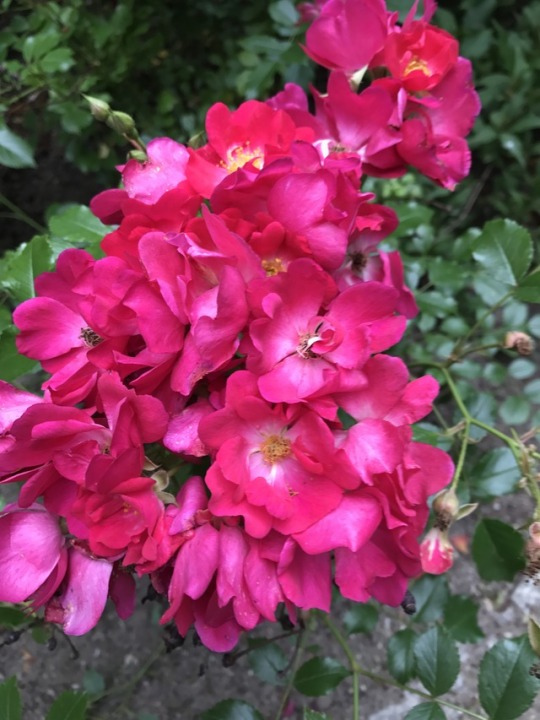


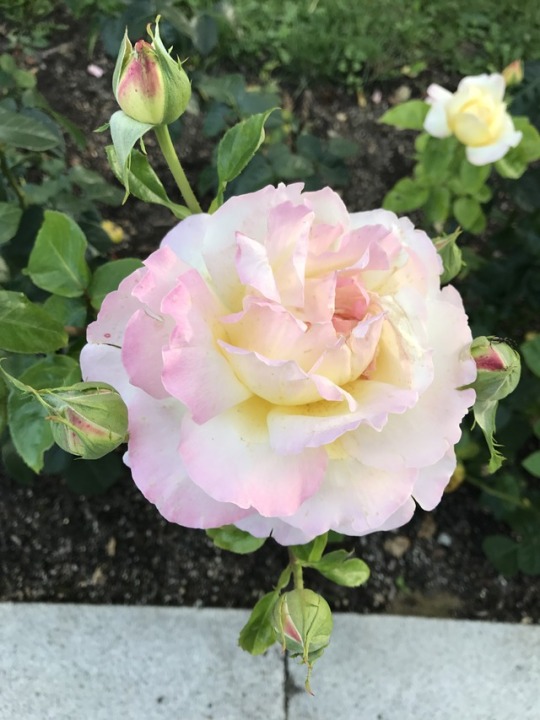
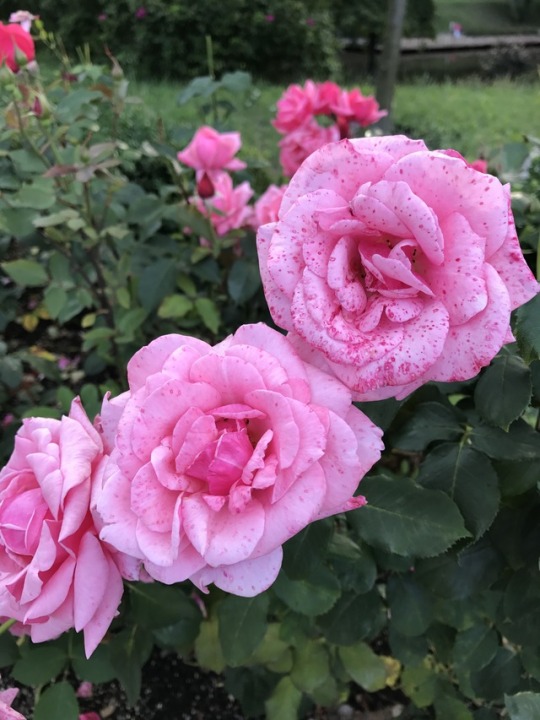
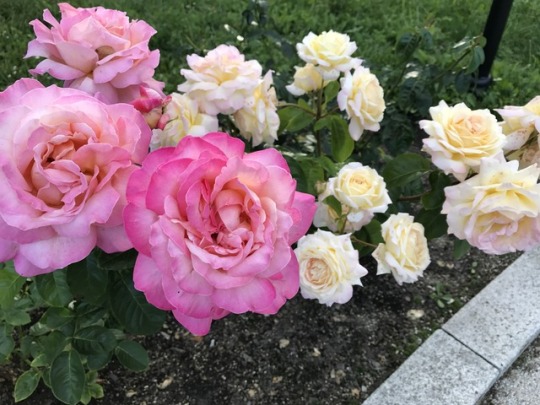

The rose is not just the most loved flower in the world, it is also the flower that is regarded as the best representation of love. Did you know that the rose is edible, can live for a very long time, has been mentioned in the bible and is a great source of vitamin C? Check out these facts about roses that you probably never knew.
1. The world’s oldest living rose is believed to be 1,000 years old. It grows on the wall of the Cathedral of Hildesheim in Germany.
2. The world’s most expensive rose is a 2006 variety by famed rose breeder David Austin that was christened Juliet. Breeding the rose took a total 15 years and cost 5 million dollars. Juliet is now considered the world’s most expensive rose cultivar.
3. Out of all colors, there are no black roses. What might sometimes be referred to as a black rose is actually a dark red rose. A good example is “The Black Rose of Turkey”, is a breed that appears pitch-black to the eye, but is actually has a dark reddish-crimson color.
4. Roses can grow quite tall. The tallest ever recorded rose bush stands at over 23 feet (7 m) tall.
5. There are over 100 species of the Rose.
6. The rose also grows into a fruit. The fruit is called a Rose Hip. It is shaped like a berry and most are red in color but you can find black and dark purple versions.
7. The rose hip of some rose species are known to be full of vitamin C. This is why the rose hip is sometimes used to create jam, jelly & marmalade. The hip also has minor medicinal uses, used in food supplements and can be pressed or filtered to make rose hip syrup.
8. Roses can live for a very long time. There are rose fossils discovered that date back 35 million years. The large rose bush that covers the wall of the Cathedral of Hildesheim in Germany has been there for over a millennium.
9. Cavriglia in Italy is the largest private rose garden in the world, having over 7,500 different varieties of roses.
10. The buds of the tiniest roses are the size of a grain of rice.
11. The rose is one among the only three flowers mentioned in the Bible. The others are lilies and camphire (henna.
12. Since ancient days, the rose has been known as the ultimate symbol of love. The rose is also associated with sympathy or sorrow.
Homemade jam from roses’ petals
Ingredients
250g rose petals
500g sugar
100ml water
Instructions
Put rose petals in a bowl and rinse with water.
Then, pour the water out and crush the petals with your hands.
In a pan, bring water and sugar to a boil.
Let it boil and evaporate until a thick syrup forms.
if you want, add the lemon juice (I didn't use any lemon juice) and vanilla
Add the rose petals.
Watch them wilt and release their aroma.
Cook until the rose petals are fully wilted, the jam has a nice red-purple color and the syrup is thick- you don't want too much liquid in your jam.
0 notes
Photo



During the trip in Silesian Botanic Garden we saw a lot of rarely seen animals so as Coccinellidae. This small animals interested us, so we decided to learn more about them. We are inviting you to read the webquest.
Coccinellidae
They are commonly yellow, orange, or red with small black spots on their wing covers, with black legs, heads and antenne. However such colour patterns vary greatly. For example, a minority of species a twelve-spotted species, have whitish spots on a brown background. Coccinellids are found worldwide, with over 6,000 species described.
Ladybugs, or ladybirds as they are also called, are neither bugs nor birds. Entomologists prefer the name lady beetle, which accurately places these lovable insects in the order Coleoptera. Whatever you call them, these well-known insects belong to the family Coccinellidae.
ALL ABOUT LADYBUGS
Ladybugs share a characteristic shape—a dome-shaped back and a flat underside. Ladybug elytra display bold colors and markings, usually red, orange, or yellow with black spots.
People often believe the number of spots on a ladybug tells its age, but this is not true. The markings may indicate a species of Coccinellid, although even individuals within a species can vary greatly.
Ladybugs walk on short legs, which tuck away under the body. Their short antennae form a slight club at the end. The ladybug's head is almost hidden beneath a large pronotum. Ladybug mouthparts are modified for chewing.
Coccinellids became known as ladybirds during the Middle Ages. The term "lady" references the Virgin Mary, who was often depicted in a red cloak. The 7-spot ladybird is said to represent the Virgin's seven joys and seven sorrows.
THE LADYBUG DIET
Most ladybugs are predators with ravenous appetites for aphids and other soft-bodied insects.
Adult ladybugs will eat several hundred aphids before mating and laying eggs on the infested plants. Ladybug larvae feed on aphids as well. Some ladybug species prefer other pests, like mites, white flies, or scale insects. A few even feed on fungus or mildew. One small subfamily of ladybugs (Epilachninae) includes leaf-eating beetles like the Mexican bean beetle.
A small number of beetles in this group are pests, but by far the majority of ladybugs are beneficial predators of pest insects.
THE LADYBUG LIFE CYCLE
Ladybugs undergo complete metamorphosis in four stages: egg, larva, pupa, and adult. Depending on the species, female ladybugs may lay up to 1,000 eggs within a few months from spring to early summer. Eggs hatch within four days.
Ladybug larvae resemble tiny alligators, with elongated bodies and bumpy skin. Most species go through four larval instars. The larva attaches itself to a leaf, and pupates. Ladybug pupae are usually orange. Within 3 to 12 days, the adult emerges, ready to mate and feed.
Most ladybugs overwinter as adults. They form aggregates, or clusters, and take shelter in leaf litter, under bark, or other protected places. Some species, like the Asian multicolored lady beetle, prefer to spend the winter hidden in the walls of buildings.
SPECIAL ADAPTATIONS AND DEFENSES OF LADYBUGS
When threatened, ladybugs "reflex bleed," releasing hemolymph form their leg joints. The yellow hemolymph is both toxic and foul-smelling, and effectively deters predators. The ladybug's bright colors, red and black in particular, may signal its toxicity to predators as well.
Some evidence suggests that ladybugs lay infertile eggs along with fertile ones, in order to provide a food source for hatching larvae. When the natural food supply is limited, the ladybug lays a higher percentage of infertile eggs.
RANGE AND DISTRIBUTION OF LADYBUGS
The cosmopolitan ladybug can be found throughout the world. Over 450 species of ladybugs live in North America, though not all are native to the continent. Worldwide, scientists have described over 5,000 Coccinellid species.
0 notes
Photo



When we were on a trip in a forest we noticed a lot of butterflies.
1. Butterflies taste with their feet.
2. A group of butterflies is sometimes called a flutter.
3. Their eyes are made of 6,000 lenses and can see ultraviolet light.
4. There are 165,000 known species of butterflies found on every continent except Antarctica.
5. Many adult butterflies never excrete waste – they use up all they eat for energy.
6. Despite popular belief, butterfly wings are clear – the colors and patterns we see are made by the reflection of the tiny scales covering them.
7. Butterfly wings move in a figure “8” motion.
8. Butterflies vary in size – the largest species may reach 12 inches across, while the smallest may only be half an inch.
9. Some butterfly species lay their eggs on only one type of plant.
10. The Very Hungry Caterpillar was no joke – the first meal after a caterpillar hatches is usually the eggshell from which it has just emerged.
11. In some areas, the number of feeding caterpillars on plants is so great that you can actually hear them munching. Thus, manners are not important in butterfly society.
12. The process by which a caterpillar magically transforms into a butterfly, aka metamorphosis, is completed in 10 to 15 days, depending on the species.
13. Butterflies are essentially cold-blooded.
14. Skipper butterflies fly so fast they could outpace a horse, but most butterflies fly at 5 to 12 miles per hour (8 to 20 kilometers per hour).
15. Butterflies have a long, tube-like tongue called a proboscis that allows them to soak up their food rather than sip it.
16. Males drink from mud puddles to extract minerals that aren’t available in flowers. This behavior is known as “puddling.”
17. “Puddle clubs” are groups of butterflies that gather at wet soil to suck up salts and minerals
18. Some butterflies have been seen drinking blood from open wounds on animals.
19. Scientists thought butterflies were deaf until the first butterfly ears were identified in 1912
0 notes
Photo


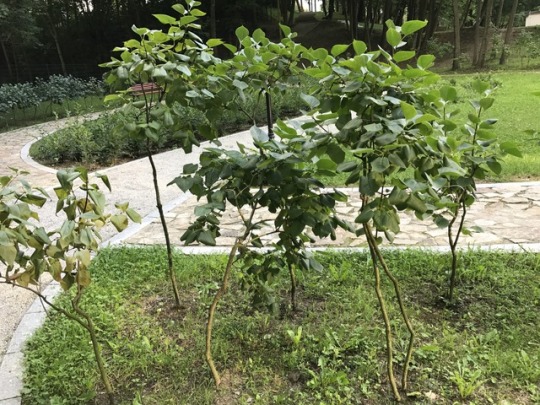

When we came back to Ornontowice, we go for a walk to the park. We spent there a lot of free time and we learned about new bushes so as Syringa. We would like to show in webquest more information about this beautiful plant.
Syringa is a genus of 12 currently recognized species of flowering woody plants in Oleacea, native to woodland and scrub from southeastern Europe to eastern Asia, and widely and commonly cultivated in temperate areas elsewhere.
What it looks like:
Syringa is an attractive perennial shrub that reaches heights of 4 to 8 feet. Its white, waxy flowers have 4 to 5 petals and many prominent bright yellow stamens. The flowers grow in clusters and give off a penetrating fragrance reminiscent of orange blossoms -- hence, syringa is also known as "mock orange." The oval leaves are 1 to 3 inches long. Large groups of syringa in bloom can the impression of a snow-covered hillside. Syringa flowers from late May through July.
Where it grows:
Syringa is found in medium-dry to moist soil along streams, rocky talus, dry ravines and canyons. Its range stretches from British Columbia to northern California east to Idaho and western Montana. Two of the 50 kinds of Philadelphus that grow worldwide are found in our region.
Look for syringa in the Boise National Forest near Idaho City and the canyons around Anderson Ranch Reservoir.
What's in a name?
The genus name "Philadelphus" honors an Egyptian king, Ptolemy Philadelphus. "Lewisii" pays tribute to the scientist and explorer Captain Meriwether Lewis, who collected syringa during the Lewis and Clark expedition.
Interesting Facts:
Native Americans fashioned arrows, pipe stems and combs from syringa’s straight, sturdy stems. It also provides forage for quail, deer and elk. Many people use syringa as a landscaping shrub
Lilacs are often considered to symbolize love. In Greece, Lebanon, and Cyprus, the lilac is strongly associated with Easter time because it flowers around that time; it is consequently called paschalia.
Lilacs are used as food plants by the larvae of some Lepidoptera species including copper underwing, scalloped oak and Svensson's copper underwing.
0 notes
Video
Ducks are birds. Ducks are also called ‘Waterfowl’ because they are normally found in places where there is water like ponds, streams and rivers. Ducks are related to Geese and Swans.
DUCK CHARACTERISTICS
Ducks are smaller than than their relatives (swans and geese). Ducks also have shorter necks and wings and a stout body.
A female duck is called a ‘hen’, they are identified by their very-dull, brown feathers. The females have dull-brown feathers so that they can hide from enemies and predators. They can also camouflage themselves in their nests and also protect their young.
A male duck is called a ‘drake’, you can identify the male duck by its brightly coloured feathers. They use these coloured feathers to attract the female ducks for mating. Here is a beautifully coloured Drake with a purple plumage, shiny green head colouring, silvery white body and grey wings with blue markings.
The males use their colourful plumage to attract females. However, they will lose or molt their colourful feathers when the females are busy hatching the eggs. The males will now look like the female in colour and will be unable to fly temporarily. They will molt again in early Autumn and get back their colourful feathers and be able to fly again. The females also molt. They replace all their feathers and get new ones after their ducklings are hatched.
Ducks have webbed feet, which are designed for swimming. Their webbed feet act like paddles for the ducks. The reason ducks can swim in cold water is their amazing circulatory system. Their blood vessels are laid out very close to each other in their legs and feet in a network that allows the warm and cool blood to exchange heat. This allows the warm blood going from the body into the feet to warm the cooler blood re-entering the body from the feet, and the blood going to the feet is cooled enough that the cold does not bother the duck. Thus the duck’s feet are able to tolerate the cold and not bother them. All birds have this circulatory system in their legs and feet.
A duck has water-proof feathers. There is a special gland called the ‘Preen Gland’ near the ducks tail. This tiny gland produces oil which the duck uses to coat its feathers.
The duck picks up the oil with its head and beak, and then smears it all over its body to make the outer feathers waterproof. Without this protective barrier, a ducks feathers would become water-logged and because they spend their whole lives around and in water, this water-proof barrier is extremely important. Beneath the water-proof coat are fluffy and soft feathers which keep the duck warm.
The ducks mouth is called a beak or bill. It is usually broad and flat and has rows of fine notches along the edge called ‘lamellae’. The lamellae helps the duck to grip its food so that it will not slip off.
However, ducks beak comes in different shapes and sizes. The shape of the beak and body determines how the duck will hunt for its food.
DUCK HABITATs
Ducks are found in wetlands, marshes, ponds, rivers, lakes and oceans. This is because ducks love the water. Some species of ducks migrate or travel longs distances every year to breed. Ducks usually travel to warmer areas or where the water does not freeze so that they can rest and raise their young. The distance may be thousands of miles away. Ducks are found everywhere in the world except the Antartica which is too cold for them.
DUCK LIFE SPAN
Ducks can live from 2 – 20 years, depending on species and whether they are wild ducks or ducks in captivity. Its a fact that a wild duck can live 20 years or more. Domestic ducks typically live 10 – 15 years in captivity. The world record is a Mallard Drake that lived to a ripe old age of 27 years.
INTERESTING DUCK FACTS
· A hen makes a loud QUACK sound while the drake has a raspy, muffled call.
· Touching a duckling does not prevent the mother duck from taking care of it. It is however best to leave ducklings alone so as not to scare the mother duck away or accidentally injure them.
· Ducks sleep with half their brains awake. Ducks are more likely to sleep with one eye open when they are located on the edge of sleeping groups. Ducks can detect predators in less than a second.
· Duck eggshells have tiny holes (pores) that allow it to breathe. A hen’s eggs can have 7500 pores, most found at the blunt end of the egg. Respiratory gasses as well as water vapour travel through these pores allowing the egg to breathe.
· Baby ducks are precocial meaning they are born with their eyes wide open, with a warm layer of down and are not fully dependant on their parents for food. Ducklings are ready to leave the nest within hours of hatching.
· A ‘clutch’ is the total number of eggs laid by one bird during one nesting session. Clutch size affected by hereditary and environmental factors. When food is abundant, birds lay more eggs.
· A brood is the total number of hatchlings, or ducklings in a clutch.
Ducks have very good vision and they see in colour
0 notes
Video
When we were on a trip in a forest we noticed a lot of insect species. So this is our webquest. Read and enjoy!
The most successful creatures. To date, scientists have catalogued about 1.5 million species of organisms on the planet, with insects making up about two-thirds of this bounty, researchers report in the journal Proceedings of the National Academy of Sciences. But scientists have only begun to scratch the surface: Studies estimate the total number of species on Earth is probably closer to 9 million. Of the planet's wildly diverse collection of creatures, some 90 percent of species are reckoned to belong to the class Insecta. Reasons for insects' success include their tiny size, which both makes hiding easier and reduces overall energy requirements; wide diet of both natural and artificial foods; tough, protective exoskeletons; frequent possession of wings, which help them reach safety, grub and mates; and prodigious ability to reproduce.
Blood bath. Speaking of circulatory systems, insects' are way different from humans'. Rather than closed vessels such as arteries and veins shuttling blood around, insects have an open circulatory system, in which their blood, called "hemolymph," bathes the organs. The insect "heart" is a segmented and chambered vessel running along the animal's back. This vessel contracts to send hemolymph forward toward the head; from there, it sloshes around back into the rest of the body. Hemolympyh is typically clear but can be greenish or yellowish, as anyone knows who has seen certain bugs splatter on their windshield or underfoot.
0 notes
Photo



Among different plants we noticed one bush called Gaultheria. So read our webquest and enjoy !
Gaultheria is a genus of about 135 species of shrubs in the family Ericaceae. The name commemorates Jean-François Gauthier of Quebec, an honour bestowed by the Scandinavian Pehr Kalm in 1748 and taken up by Carl Linnaeus in his Species Plantarum. These plants are native to Asia, Australasia and North and South America. In the past, the Southern Hemisphere species were often treated as the separate genus Pernettya, but no consistent reliable morphological or genetic differences support recognition of two genera, and they are now united in the single genus Gaultheria.
Description
The species vary from low, ground-hugging shrubs less than 10 cm (3.9 in) tall, up to 2.5 m (8 ft 2 in) tall, or, in the case of G. fragrantissima from the Himalaya, even a small tree up to 5–6 m (16–20 ft) tall. The leaves are evergreen, alternate (opposite in G. oppositifolia from New Zealand), simple, and vary between species from 3 to 10 cm (1.2 to 3.9 in) long; the margins are finely serrated or bristly in most species, but entire in some. The flowers are solitary or in racemes, bell-shaped, with a five-lobed (rarely four-lobed) corolla; flower colour ranges from white to pink to red. The fruit is a fleshy berry in many species, a dry capsule in some, with numerous small seeds.
Uses
Several species are grown as ornamental shrubs in gardens, particularly G. mucronata (Pernettya mucronata) from southern Chile and Argentina and G. shallon (salal) from the Pacific Northwest of North America. Many of the smaller species are suitable for rock gardens. Like most other ericaceous plants, Gaultheria species do best in peaty soil that never fully dries out.
The fruit of many Gaultheria species is edible, particularly that of salal, which makes an excellent jelly. One, the American wintergreen or eastern teaberry, G. procumbens, is the traditional source of wintergreen flavouring; it is called the eastern teaberry because its leaves can be used to make a tea, and its berries can be eaten as are. The fruit of most other Gaultheria species is insipid in flavour and not extensively consumed.
One variety of G. leucocarpa shows anti-inflammatory properties and is used in Chinese herbal medicine for the treatment of rheumatoid arthritis, swelling, and pain.
0 notes
Photo


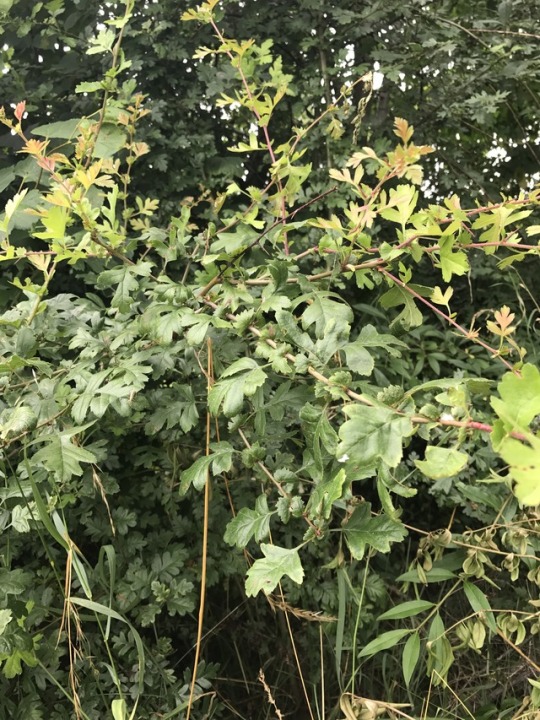


Crataegus is a bush which we saw the most often during our camp. Its flowers are broadly used by people. More information about this plant, we show in webquest
Crataegus called hawthorn, thornapple, May-tree, whitethorn, or hawberry, is a large genus of shrubs and trees in the family Rosaceae, native to temperate regions of the Northern Hemisphere in Europe, Asia and North America.
mostly growing to 5–15 metres tall with small pome fruit and (usually) thorny branches. The most common type of bark is smooth grey in young individuals, developing shallow longitudinal fissures with narrow ridges in older trees.
Ecologe
Hawthorns provide food and shelter for many species of birds and mammals, and the flowers are important for many nectar-feeding insects. Hawthorns are also used as food plants by the larvae of a large number of Lepidoptera species; see List of Lepidoptera that feed on hawthorns. Haws are important for wildlife in winter, particularly thrushes and waxwings; these birds eat the haws and disperse the seeds in their droppings.
Traditional medicine
Several species of hawthorn have been used in traditional medicine.
Landscaping
Many species and hybrids are used as ornamental and street trees.
Grafting
Hawthorn can be used as a rootstock in the practice of grafting.
Bonsai
Many species of Hawthorn make excellent bonsai trees.[23] They are grown and enjoyed for their display of flowers.
Other uses
The wood of some hawthorn species is very hard and resistant to rot. In rural North America, it was prized for use as tool handles and fence posts. The wood being hard it is described by Johns as the best substitute for boxwood for wood engraving.
Propagation
Although it is commonly stated that hawthorns can be propagated by cutting, this is difficult to achieve with rootless stem pieces. Small plants or suckers are often transplanted from the wild. Seeds require stratification and take one or two years to germinate. Seed germination is improved if the pyrenes that contain the seed are subjected to extensive drying at room temperature, before stratification. Uncommon forms can be grafted onto seedlings of other species
0 notes
Video
During our stay at the Gołębiewski Aqua park, In an impressive and beautiful acquarium we saw a lot of fish species.
1. The lipsticks connection!
Well, ladies, give thanks to the fishes as your precious component of makeup, the lipsticks, contain fish scale which contributes to your sassy look
2. Fishes have taste buds all over their body
Did you know that fishes have the ability to taste without even opening their mouth?
This truly is amazing.
3. Fishes are counter shaded
Electric blue fish
To be less visible in the water, most fishes are counter shaded. They are darker on top, lighter or silver on their sides and brightest on their bellies.
4. Lots of Fishy things!
Fishes are found in more species than all the other species of amphibians, reptiles, birds and mammals combined. There are approximately 32,000 different kinds of fishes.
5. Special fish radar helps in navigation
Fishes have a special sense organ, the lateral line which is like radar and helps fishes to navigate in dark or murky water.
6. Fishes can apparently change sex
Some fishes are known to change their sex during their life. That is purely strange, isn’t it?
7. Fishes have great sense
Fishes are supposed to have an excellent sense of touch, taste and sight. Some even have a good sense of hearing and smell. And what is more intriguing is that fish can feel pain and experience stress just like other mammals and birds.
8. Fishes can drown
It would be weird to say that fishes can drown, but that can happen. If there is not enough oxygen dissolved in the water, they can be drowned.
9. Fishes cannot Chew
Fishes could suffocate and die if they tried to chew because chewing would interfere with their passing of water over their gills.
10. Deadly Puffer Fish
The Puffer Fish
A special kind of fish, Puffer fish, contains enough poison to kill 30 people. The toxin found in this fish is 1200 times deadlier than the Cyanide.
11. Fishes make lot of noises even without vocal cords
Fishes make a lot of noises to convey their messages. Even though they don’t have vocal cords, they use other parts to moan, grunt, boom, hiss, creak, shriek and wail.
12. Rain of Fish
Rain of fish Festival, Yoro
A curious event of “RAIN OF FISH” occurs every year in the city Yoro in Honduras where hundreds of fishes rain from the sky.
13. A fish can change its sex!
In a recent research, it was found out that about one-third of male fishes in British rivers are changing sex due to sewage and pollution in the rivers.
14. A fish that can live without water!
Lungfish can live without water for several days. It can survive on land because it has both gills and a lung. It takes in air with its lung through a tube (called breathing tube) that leads to the surface
15. Some fishes are not fish!
Though their names suggest that they are fish, they don’t belong to the fish family and the reason is that they don’t possess the required features to be the fish. Fish have bones, gills, and scales while the Starfish and Jellyfish don’t have bones, gills, and scales.
16. A fish can beat your car!
If you proud on your car-speed then hold for a moment as the Sailfish can beat your car. the Indo-Pacific Sailfish, Istiophorus platypterus, is considered world’s fastest fish with an average speed of 110 km/hr.
17. Now, the slowest fish!
Seahorses move so slowly that one can barely notice and that’s the feature, which makes them the slowest fish in the world.
18. “Fish” and “Fishes” are two different things!
We use the term ‘Fish’ when we refer to only one species of fish like 10 Shark are 10 fish while the term ‘Fishes’ is used when we refer more than one species like 10 Shark, 2 Salmon, and 4 Trout are 16 fishes.
0 notes
Photo
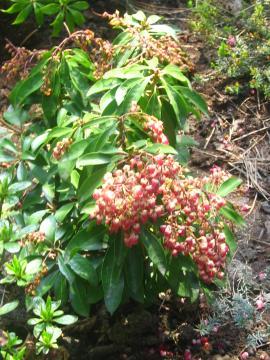
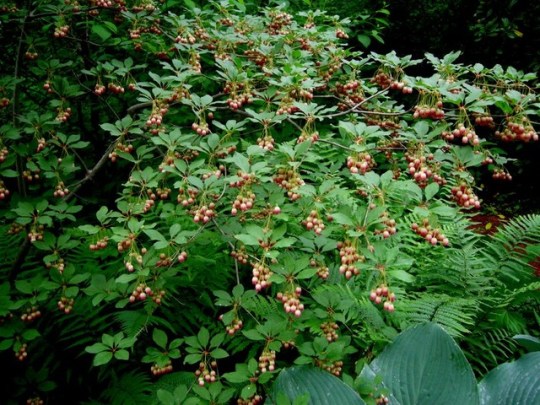

Among different plants we noticed one bush called Enkianthus campanulatus which flowers in a shape of small bells have stayed in our memory. This beautiful interested us, so we decided to do a webquest.
Culture:
Easily grown in average, medium moisture, well-drained, acidic soils in full sun to part shade. Best in part shade. Prefers moist, organically rich, peaty soils with a pH below 6. Blooms on previous year’s growth, so any pruning should be done immediately after flowering.
Noteworthy Characteristics:
Enkianthus campanulatus, commonly called redvein enkianthus, is an upright, deciduous shrub which typically grows 6-8’ tall (less frequently to 10-15’). It is native to open woodlands in Japan. Tiny, bell-shaped, nodding, creamy-yellow to whitish-pink flowers (each to 1/ 2” long) with pink striping and edging appear in pendulous clusters (racemes) in late spring (May-June). Individual flowers resemble those of Pieris which is in the same family. Elliptic, serrate, medium green to bluish green leaves (to 3” long) are crowded near the branch ends. Fall color is variable, but at its best features quality red foliage with tones of orange, yellow and purple.
Genus name comes from the Greek words enkyos meaning pregnant and anthos meaning flower in reference to the pregnant-looking flowers (prominent swelling at the base of each flower) found on some (e.g., E. quinqueflora) but not all species in the genus.
Specific epithet comes from the Latin word campanulatus meaning bell-shaped in reference to the shape of the flowers.
Problems
No serious insect or disease problems. Since fall color is variable with this species, gardeners may wish to purchase plants in autumn when fall color is on display. Watch for spider mites in hot summer climates.
Garden Uses
Specimen, group or mass in the landscape. Effective when grown with rhododendrons which share the same acidic soil requirements. Shrub borders, foundations.
0 notes
Photo



When we were in the park, we saw one bush called Cornus alba.
Cornus alba is a species of flowering plant, native to Siberia, northern China and Korea. It is a large surculose shrub that can be grown as a small tree. As a popular ornamental used in landscaping its notable features include the red stems in fall (autumn) through late winter, the brightest winter bark of any cornus. For the brightest winter bark, young shoots are encouraged by cutting to the ground some older stems at the end of the winter, before leaves are open.
Uses
Dogwoods are widely planted horticulturally, and the dense wood of the larger-stemmed species is valued for certain specialized purposes. Cutting boards and other fine turnings can be made from this fine grained and beautiful wood. Over 32 different varieties of game birds, including quail, feed on the red seeds.
Various species of Cornus, particularly the flowering dogwood (Cornus florida), are ubiquitous in American gardens and landscaping; horticulturist Donald Wyman stated, "There is a dogwood for almost every part of the U.S. except the hottest and driest areas".In contrast, in England the lack of sharp winters and hot summers makes Cornus florida very shy of flowering.
Other Cornus species are stoloniferous shrubs that grow naturally in wet habitats and along waterways. Several of these are used along highways and in naturalizing landscape plantings, especially those species with bright red or bright yellow stems, particularly conspicuous in winter, such as Cornus stolonifera.
The species Cornus mas is commonly cultivated in southeastern Europe for its edible berries, which can be turned into jam, fermented into a wine, or eaten raw after slight bletting.
Dense and fine-grained, dogwood timber has a density of 0.79 and is highly prized for making loom shuttles, tool handles, roller skates and other small items that require a very hard and strong wood. Though it is tough for woodworking, some artisans favor dogwood for small projects such as walking canes, arrow making, mountain dulcimers and fine inlays. Dogwood wood is an excellent substitute for persimmon wood in the heads of certain golf clubs ("woods"). Dogwood lumber is rare in that it is not readily available with any manufacturer and must be cut down by the person wanting to use it.
Larger items have also been occasionally made of dogwood, such as the screw-in basket-style wine or fruit presses. The first kinds of laminated tennis rackets were also made from this wood, cut into thin strips.
Dogwood twigs were used by pioneers to brush their teeth. They would peel off the bark, bite the twig and then scrub their teeth.
The bark of Cornus species is rich in tannins and has been used in traditional medicine as a substitute for quinine.During the American civil war confederate soldiers would make a tea from the bark to treat pain and fevers, and dogwood leaves in a poultice to cover wounds.
.
0 notes
Photo



During our numerous trips we have seen a lot of storks.They interested us and we decided to find out something more about them.So collected information we are presenting in a webquest.
Some facts about storks:
1. Storks are large, long-legged, long-necked wading birds with long, stout bills.
2. They live on all continents except Antarctica and are most common in tropical regions.
3. Many species prefer to be in or near wetlands, though some occur in drier areas.
4. There are 19 species of stork.
5. The lifespan is about 30 years and sometimes up to 40 years.
6. The largest species of stork is the marabou stork, with a height of 152 centimeters (60 inches) and a weight of 9 kilograms (20 pounds). A wingspan of 3.7 meters (12 feet) was accepted by Fisher and Peterson, who ranked the species as having the largest wing-spread of any living bird.
7. The smallest stork is the hammerkop at 56 centimeters (22 inches) in length with a weight of 470 grams (17 ounces).
8. Some species are slate gray, while others sport white, red, and black.
9. Strikingly colored bills in various combinations of red, black, and yellow often complement these plumages.
10. Storks have a dignified appearance, standing graceful and tall or marching deliberately on slender legs. The legs vary in shades of black, gray, or orange.
11. Storks are very beautiful in flight. They fly mostly by soaring on warm air currents, with long, broad wings that only flap occasionally. They stretch their neck out and dangle their legs behind them as they fly, making them recognizable even from far away.
12. Most storks eat frogs, fish, shellfish, insects, earthworms, small birds and small mammals. Some storks are scavengers.
13. The stork is almost voiceless and largely silent, although it does communicate with brief hissing noises and, most importantly, bill-clattering.
14. Many stork species are migratory.
15. Various terms are used to refer to groups of storks, two frequently used ones being a muster of storksand a phalanx of storks.
16. Storks were once thought to be monogamous, but this is only true to a limited extent. They may change mates after migrations, and migrate without them.
17. When it comes to nesting, storks may be either colony nesters or solitary nesters. Colony nesters gather in large groups, from a few pairs to several thousand birds.
18. Depending on the species, nests can be found in trees, on buildings, among rocks, or on the ground.
19. Their nests are often very large and may be used for many years. Some nests have been known to grow to over two meters (six feet) in diameter and about three meters (ten feet) in depth.
20. Female lays between 2 and 5 eggs. Incubation period lasts 25 to 35 days.
21. When stork chicks hatch, they are almost naked, but they quickly develop a covering of fluffy down feathers. They are altricial and need their parents to care for them, so both parents are kept busy flying back and forth to bring them food. Chicks can eat up to 60% of their own body weight per day.
22. After about 3 or 4 weeks, the chicks start to stand up in the nest and flap their stubby wings. After a few
months, their flight feathers start to grow in, and they learn to fly. Even then, they are still dependent on their parents for food for several weeks before they start fending for themselves.
23. Like most families of aquatic birds, storks seem to have arisen in the Palaeogene, maybe 40–50 million years ago.
24. Birdlife International lists three species as Endangered (Oriental white stork, Storm’s stork, and greater adjutant) and two as Vulnerable (lesser adjutant and milky stork). The painted stork and the black necked stork are listed as Near Threatened. Many other species are suffering regional declines in the face of ever-increasing pressure for land for agriculture and building development.
25. Storks’ size, serial monogamy, and faithfulness to an established nesting site contribute to their prominence in mythology and culture.
26. The legend about storks bringing babies got started in Victorian times. When a child asked, “Where did I come from?”, the parents simply said “The stork brought you.” This tied in nicely with the fact that European white storks often nests on the roof and chimney of houses in the spring, a time when many babies are born. The bird became a symbol of fertility and is considered good luck.
27. In Ancient Egypt, it was associated with, and was the hieroglyph for, the Ba, or “soul“.
28. The Hebrew word for the white stork is chasidah (חסידה), meaning “merciful” or “kind“.
29. Greek and Roman mythology portray storks as models of parental devotion, and it was believed that they did not die of old age, but flew to islands and took the appearance of humans.
30. Ottomar Anschütz’s famous 1884 album of photographs of storks inspired the design of Otto Lilienthal’s experimental gliders of the late nineteenth century.
31. Storks are closely related to herons, spoonbills and ibises.
0 notes
Photo







DURING OUR FREE TIME, WE WENT for a WALK IN MARADKI.
WE VISITED MR. HENRyK AND WE SAW THAT HE HAS GOT a lot of beehieves. we decided to learn something about bees.
THE WEBGQUEST WILL CONSIDER INFORMATION ABOUT THIS ANIMALS.
READ AND ENJOY.
1.HONEY BEES CAN FLY AT SPEEDS OF UP TO 15 MILES PER HOUR.
2.A HONEY BEE COLONYCAN CONTAIN UP TO 60,000 BEES AT ITS PEAK.
3. A SINGLE HONEY BEE WORKER PRODUCES ABOUT 1/12TH OF A TEASPOON OF HONEY IN HER LIFETIME.
4.A QUEEN HONEY BEE STORES A LIFETIME SUPPLY OF SPERM.
5. THE QUEEN HONEY BEE LAYS UP TO 1,500 EGGS PER DAY, AND MAY LAY UP TO 1 MILLION IN HER LIFETIME.
6. THE HONEY BEE USES THE MOST COMPLEX SYMBOLIC LANGUAGE OF ANY ANIMAL ON EARTH, OUTSIDE OF THE PRIMATE FAMILY.
7. DRONES, THE ONLY MALE HONEY BEES, DIE IMMEDIATELY AFTER MATING.
8. HONEY BEES MAINTAIN A CONSTANT TEMPERATURE OF ABOUT 93º F WITHIN THE HIVE YEAR-ROUND.
9. HONEY BEES PRODUCE BEESWAX FROM SPECIAL GLANDS ON THEIR ABDOMENS.
10. AN INDUSTRIOUS WORKER BEE MAY VISIT 2,000 FLOWERS PER DAY.
0 notes